Forum Replies Created
-
AuthorPosts
-
in reply to: I'm new here #32964
Ray, that’s a great idea! I’m off tomorrow AM (early) for more medical test, and will be away all week, but I’ll try to get those sent and posted on the Arrow lethality forum as soon as I get back. Thanks for the idea!
Ed
IronCreekArcher wrote: Those are some very convincing pictures Dr. Ashby! Do you happen to know any of the stats regarding the set-ups i.e. draw weight, EFoC, arrow material, yardage, etc. Thank you again for the great pictures!!
Here’s what info I have on these particular shots:
All I know on Benji’s elk is that he used the 160 gr. Grizzly BH on a heavy shaft.
English is a second language for David, but here’s what I can ascertain for certain from his letter: Re his Spanish Alps Mouflon. David used a 55#@28″ draw recurve. All I could get on the arrow was that it was a “heavy arrow” with a 190 gr. Grizzly. David did the stalk by crawling on his belly. With the mouflon downhill at 11 yards, David raised to his knees. From there he says he could only get a partial draw (he indicates about a 1/2 draw), with his bow held horizontal, before the string hit his chest. At the shot, to quote David “The heavy arrow and Grizzly broadhead disappeared from sight”. The shaft was a through and through, and the mouflon dropped almost immediately; with the bone-hit results shown in the photos above.
I have much more arrow detail on Wesley’s shots. The bow was a 70# Compound. The arrows weigh 654 grains. They have the 190 gr. Grizzly and are 26% FOC. Both the pelvic gurdle shot and the shoulder shot were pass-throughs.
It’s interesting that some folks say whitetails are so easy to penetrate that it matters little what arrow setup one uses. Wesley is an exceptional shot; a former Georgia State 3-D Champion; and a highly experienced bowhunter. What led him to experiment with the Study-suggested arrow setup, and then change his setup to the arrow described above (which is now his “one and only” hunting arrow setup), was a series of unintended hits, by both himself (with this same 70# compound) and Harold (Wesley’s father – also using a compound, but I don’t know the draw weight), into the ‘heavy bones’ on Georgia whitetails that resulted in unrecovered animals. The recovered arrows showed damaged arrows/broadheads and scant penetration, suggestive of a failure to penetrate the bone, or bones.
Ed
in reply to: Idea – already tried?? #31854J – First, check out the 2007 Update, Parts 2 & 3. That will give you the background on the Internal Footings. After that, perhaps the following photos will make a bit more sense.
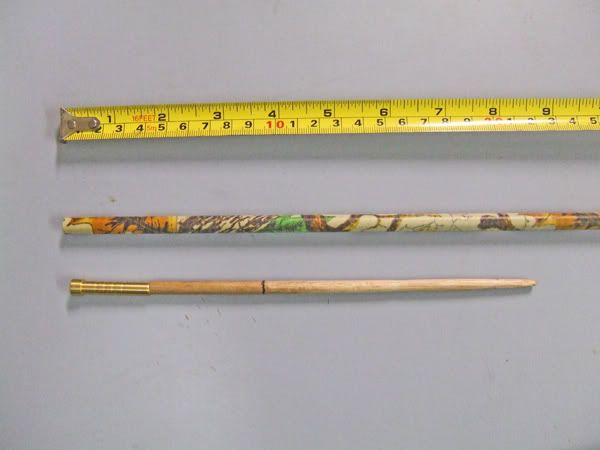
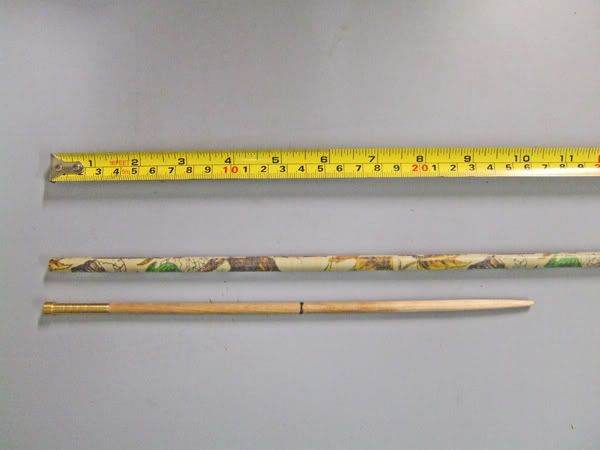

When I’m a bit more up to it I’ll try to do a full explination on the IF design, construction and instillation.
Ed
in reply to: Idea – already tried?? #31176J – You can certainly add a weight (be it another brass insert or any other weight that will fit) behind the primary insert, as a way to increase tip weight/FOC. This is one of the methods I’ve used several times. However, if you’ll look at the ‘EFOC & Woodies’ thread; I added a post there about the angular-impact shaft-weakening effect that results from having a ‘longer insert’. I prefer to have as much of the weight as possible in the head/adaptor, then I use the graduated-flex Internal Footing back of the insert. The IF, depending on its length, can also be used to stiffen the dynamic spine, when needed.
The ‘new’ Grizzly’s sound like they will be a few grains heavier, and that’s good. I’m told that the biggest of the single-bevel STOS glue-ons are supposed to be close to 250 grains (when available), and Ed Schlief is working on a ‘machined from a single piece’ glue-on “Ashby Traditional” that will be longer than the screw-in version (with the same overall width) and a weight a bit over 250 grains.
Another option would be a steel adaptor. At the moment you would have to get someone to custom make them, but Jon Hand (fullhouse67@frontiernet.net) is a machinest and bowhunter who has made some prototypes that work perfectly. Jon was looking for a jobber to destribute them for him (he’s not interested in marketing them himself), but I haven’t seen any advertized, so don’t know if they are available. You might contact Jon and respectifully grovel at his feet and be able to get a few steel inserts.:)
Ed
in reply to: EFOC woodies #30748I’ll ‘speculate’ that Dave is having problems with the shaft breaking at the point where the woody weight and shaft join. Why? Increasing the length of the ‘rigid structure’ creates a longer lever arm for the force. On an angular impact that would mean an increase in the applied force at the point where the rigid structure and the shaft meet.
‘Externally footing’ a shaft with a section of aluminum has somewhat the same effect, but the section of aluminum shaft would show a bit more flex, compared to the more rigid woody weight. Also, the longer such an aluminum shaft section external footing was, the more flex it would exhibit (at a given applied amount of oblique force).
I had this same ‘problem set’ when trying to work out the internal footing system to strengthen the carbon shafts. Adding a simple dowel inside the carbon shaft made them stronger on direct impact shots, but on angular impact it simply moved the weak point further back along the shaft, and did appear to increase the angular-impact shaft breakage rate somewhat. That’s what led to the graduated-flex internal footing design.
Ed
in reply to: NRA pros and cons #29783The NRA is the number one defender of our Second Amendment Right to “keep and bear arms”. The Second Amendment isn’t about hunting. It purpose is to assure the citizenry’s right to protect itself from outside threats of all types: personal attack, foreign attack, or the actions of our own government. It’s about our individual right to possess ARMS … and that doesn’t mean just “firearms”.
Ed
in reply to: Paper tuning #29765Paper tuning has never given me results anywhere near as good as I achieve with bare shaft tuning. The best bear shaft tuning information I know of is on O.L. Adcock’s website. Go to: http://www.bowmaker.net/index2.htm and click on the bow tuning section.
Ed
in reply to: Your Maximum Yardage #28787I didn’t try to keep any records during the first 25 years I bowhunted but, in the 25 years since, the average range across the last 620 some-odd big game animals that I do have written record for has been just under 16 yards. Over 85% have been at 20 yards or less. I like to put the challenge of my yardage limits in a different light; can I get close enough that I have to choose between shoot’n it or pet’n it!
Ed
in reply to: Heavy or light arrows #28752If I can ever get through all these medical problems and get back to the REALLY IMPORTANT stuff (like entering all the 2008 test data onto the computer) I’ll be able to see what all the data from the 2008 buffalo testing has to say, but I can already tell you that some testing with some heavy, penetration maximized arrows and a 40#@27″ recurve gave some pretty eye-popping results on buffalo … and those ribs are definitely “heavy bone”!
Ed
in reply to: New Grizzly coming soon! #28739Dave, you found out about this before I did! I just HAVE to get away from all the lost time in doctor’s offices!
The photos look good.
Ed
This is the section I’m looking forward to the most! I’m really interested in the experiences other have when applying the Study’s data to their arrow selection. To start things off, I’ll pass along just a few of the photos that folks have sent me.
This first one is David Messiaen’s Spanish Apls Mouflon, taken in 2008.
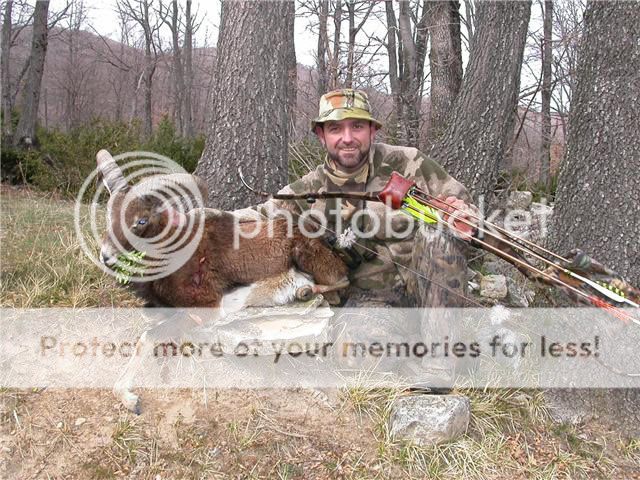
Here’s the entrance side scapula of David’s Mouflon, showing the true ‘hole’ left by the single-bevel Grizzly.
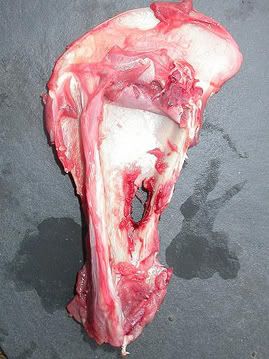
And the exit side scapula of David’s Mouflon, split near the head.
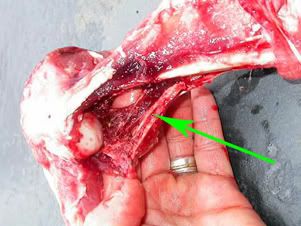
Here’s Benji Hill’s 2008 Elk.
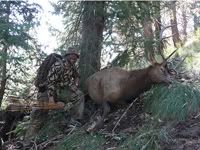
These are the holes left by the passage of the single-bevel grizzly as it passed through the elk’s lungs. Note size of the holes in comparison to Benji’s hands. This is the ‘scrambling’ or ‘mushing’ effect (so named by Ray Hammond) of the rotating single-bevel BH through soft tissues.

Here’s are close-ups of the mushed up lung tissues.
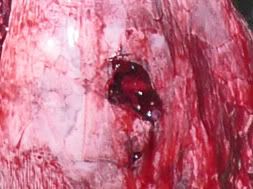
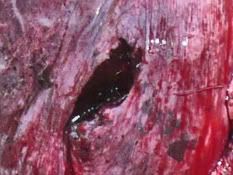
Next are the 2 sides of a whitetail pelvic girdle hit; from Wesley Mulkey. Note size of the holes through the bone and the amount of clearance the single-beveled BH on his EFOC arrow created for the trailing shaft!
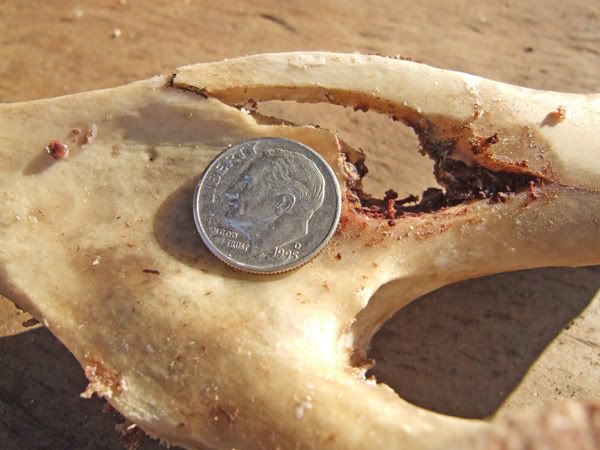

Also from Wesley Mulkey, a completely blow-apart ball joint on the entrance side shoulder on a whitetail; with the head of the scapula being severed on the off side.

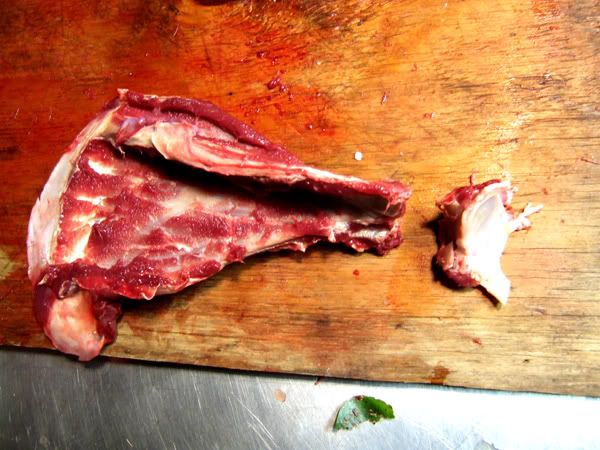
Ed
in reply to: Ashby forum reborn — please read! #28052Just back from several days away, getting more medical test, and have to get some x-rays taken tomorrow, but will try to check back tomorrow evening or Friday; to look over the forum. Only around till Monday, then I have to go back for more med test.
If it’s on schedule, the first of a 2 part article on the bows and arrows of Papau New Guinea should be in the upcoming issue of Primitive Archer. Last year, I had a first-hand chance to examine both the bows/arrows used prior to WWll and those in contemporary use by the same PNG tribe; the natives of the Bula Planes region. The first article deals with the bows from each era, but what will be of interest to those following this forum will be in the second article – the arrows used pre-WWll and those in use today. Clearly, even Ultra Extreme FOC arrows have a very long “tradition” in archery! All you ‘woody shooters’ will get a chance to see some photos on not just EFOC wood-shafted arrows, but ones with over 40% FOC!
After they are ‘in print’ in Primitive Archer, I’ll send a consolodate (into a single article) copy to be posted on this forum. It certainly adds some historical context to heavy weight, EFOC arrows!
Okay, too beat to try to read over all the postings tonight, but glad to see everyone who’s here.
Ed
in reply to: 2 Blade Blood Trails? #17466Steve, if you do get some intact shoulders from the butcher for some testing you can expect to see some evidence of bone splits with the single bevels (and that’s worthwhile to see), but the splits seen will not be anywhere near the frequency or degree that you will see in fresh bone. How ‘fresh’ the bone is does affect the results.
I can’t stress strongly enough that, despite years of trying everything I could think of, I have not found ANY alternative testing medium that gives results that accurately correlate with either the results from actual bow-kills or the test shots into freshly downed animals. (I keep seperate databases for bow kills and test shots, which makes a nice cross reference to be certain that the test data correlates with actual kills data.)
Post mortem tissue changes have enough effect on results that a destinct and consistent difference in average results can be seen between those shots and both the ‘actual kill’ and ‘test shot’ database results. I use a “30 minute rule” for the collection of test shot data; all shots must be taken within 30 minutes of animal collapse. More time than that, especially in cold weather, and the results become less consistent with the ‘actual kills’ data.
Shoot those shoulders from the butcher shop and note the results, and then realize that you WILL SEE FAR MORE DRAMATIC RESULTS in a ‘real life’ situation.
Ed
p.s.: I’m heading off in a few minutes for some medical appointments and will be out of touch for (at least) several days.
in reply to: 2 Blade Blood Trails? #16702skrsr1,
I, for one, will certainly be interested in your experiences with the single-bevel this fall. Once your animal is on the ground, why not try a couple of hard-bone shots too? Unlike bullets, arrows don’t ruin TOO MUCH meat!
Ed
p.s.: I find your writting/wording just fine.
in reply to: 2 Blade Blood Trails? #16393Dan, best of luck, but luck is a relative thing. Sounds like you’ve stacked the odds in your favor … should the hit be less than perfect. (If the hit’s perfect, and the arrow keeps its structural integrity, it won’t matter much what you use, it will work!)
It’s now been over 50 years since my first big game bow kill. I’m absolutely positive that the arrow setup I was using has, several times, made the difference between a recovered animal and a wounded and lost one.
For absolute positive, my wound-loss rate has became significantly lower as my arrow’s setup and penetration potential got better. During my first 25 years of bowhunting (before the first Natal Study) I had a not-so-good wound-loss rate and, like most, attributed it all to “poor hits”. Back then, I even managed to hit and fail to recover as many animals IN JUST ONE YEAR as I have in my entire second 25 years of bowhunting!
My back injury, surgery and some still ongoing secondary problems has delayed the Study Updates from the 2008 testing, but I promise to get to them as soon as I’m able to. There’s some interesting stuff there.
Ed
-
AuthorPosts

